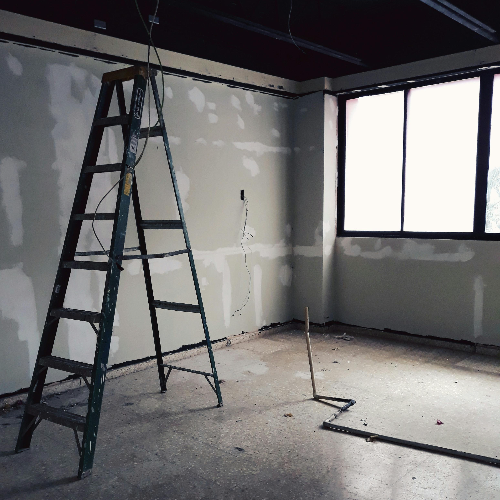Dashpivot Article – 3 point contact ladder safety
3 point contact ladder safety
The 3 point contact rule is a simple yet one of the fundamental rules of ladder safety – prevents slips, falls, injuries, and fatalities. In this article, we’ll talk more about why keeping 3 points of contact matters, how to properly do it, and how smart tools can turn ladder safety into a daily habit.

Table of Contents
Article Summary
- This 3 point contact toolbox talk seamlessly provides a medium for employees to relay key safety information, keeping workers safe. Having smart tools enhances how employers and companies maintain compliance with regulatory bodies.
- The 3 point contact rule is globally acknowledged as the best practice in standards related to ladder safety and working at heights, whether it is explicitly mentioned within the regulations or not. It's a universally collective rule that the 3 point contact rule should be practiced.
- Simple rules, like the 3 point contact rule, are intuitive and straightforward, but it's still important to follow the steps to stay grounded when climbing. Make the fundamentals non-negotiable daily habits to stay disciplined and accountable when working with and on ladders.
How important is 3 point contact in ensuring ladder safety?
The 3 point contact rule in ladder safety, is a simple but extremely effective rule/method that is exactly what its name means – you maintain three points of contact when you’re climbing or going down a ladder: (1) two hands and one foot, and; (2) two feet and one hand. This unforgettable method is important in ladder safety because it helps build stability when going up or down the ladder, and reduces the chances of the worker slipping, falling, and/or sustaining injuries.
It’s not a standalone regulation per se, nor has an originator.
It simply was acknowledged as the best practice for safe climbing and ladder safety, and have standards that explicitly include and/or imply 3 point contact as an essential method for climbing and ladder procedures.
The CSA Z11 in Canada, HSE guidance documents in the UK (like the INDG455), and AS/NZS 1892 in Australia/New Zealand explicitly include 3 point contact rule as a method and a climbing requirement to use when climbing ladders. The other ones like 29 CFR 1910 (General Industry) from OSHA and ISO 14122-4 from ISO Standards don’t mention the term directly in their regulations, but they do promote it in some way, either in training materials or encouraging to maintain “safe hand footholds”.
See what regulatory bodies have to say about ladder safety in general with these articles: Ladder Safety HSE, OSHA Ladder Safety, and CCOHS Ladder Safety.
Formatting ladder safety docs for 3 point contact
Implementing the 3 point contact rule in the workplace and sites is key, but if that doesn’t come across properly to the very workers who should be performing it, then it’s not really effective. It’s important to conduct safety talks, daily documents, inspection forms, and others to communicate the expectations to workers when using ladders. That’s why it’s also as equally important to format these safety documents to promote 3 point contact across teams.
See this form below, to which you can structure and tailor-to-fit your talks and safety discussions properly. Provide clear instructions and visuals that make these digital documents more than just routine documentation.

Use this 3-Point Contact Toolbox Talk for free
How to use the 3 point contact rule on a ladder?
We’ve said it before that the 3 point contact rule means keeping three points of contact when you’re using the ladder. It’s easy to envision this and the rule seems pretty intuitive, but when workers are in a rush, holding items, carrying tools, or just overall distracted, the rules can help they stay grounded and focused.
Face the ladder when you're going up or down
This should be common sense – face the ladder when you're going up or down. You cannot maintain three points of contact if you’re facing away the ladder.
Keep three points of contact
We’ll say it again, it’s either two hands and one foot, or two feet and one hand. If you’re carrying tools, never ever carry them using your hands. Use belts or pouches for smaller tools, and use pulleys and other mechanical means to hoist larger tools. Never tuck the tools under your arm or hold them using your mouth.
Go up or down one limb at a time
To maintain three points of contact, just simply let go one limb at a time. One hand or one leg. Make sure that you’re firmly gripping on the ladder as you do to stay secured and balanced.
Climb or go down slowly and carefully
Never rush, because as you lose balance, you likely lose 3 points of contact, and slip or fall.
To understand more about how to incorporate these simple reminders in keeping 3 points of contact, read how ladder safety works in this article Scaffolding Ladder Safety or just generally in the construction industry in Ladder Safety in Construction.
Making ladder safety a daily habit
The 3 point contact method of climbing has been long used by the U.S. Army, Navy, and Marine Corps to maintain a strong grip especially in high-risk environments, like climbing on elevated surfaces, getting on vehicles, and not just in ladder climbing. If they do it and have been successful in operations, then regular workers across high-risk industries can incorporate this method as well for regular work, even by just simply climbing a ladder.
The military sets a perfect example for cultivating a disciplined mindset in turning simple methods into healthy habits. Employers and companies across all industries who use ladders can draw inspiration from how the military preserves a culture of safety. With the 3 point contact rule indirectly inspired from them, workers and other civilian workplaces can use this powerful model to promote safer ladder climbing habits.
Turn simple rules like the 3 point contact rule into non-negotiable daily habits and safety disciplines fully ingrained into simple daily tasks in the workplace.
Other factors that mainly contributed in the 3 point rule being used as the fundamental safety rule in ladder climbing are research agencies and associations. Known agencies like the National Institute for Occupational Safety and Health (NIOSH) conducted researches in ergonomic practices and concluded that the 3 point method is effective in preventing falls when climbing. Similarly, construction associations integrated this practice across trainings, protocols, and company policies, which resulted into a worldwide spread into it becoming one of the fundamental safety rules in ladder climbing.
Ladder safety compliance made easy with smart solutions
The 3 point contact rule is a proven practice that ensures ladder safety, but it’s difficult to actually maintain that across worksites, especially when you’re dealing with multiple workers on the daily. Simple practices can be easily overlooked, especially with the high demands on high-risk industries associated with ladder climbing or working at heights. However, there are smart solutions that relay important messages and make ladder safety compliance easily achievable.
Relay key messages, safety meetings, safety discussions – whether brief or long using this safety meeting app and this toolbox talk app. Combine fundamental safety practices similar to the 3 point contact rule with tools that actually encourage turning them into habits. You can easily document your safety meetings, make that data accessible for audits and compliances, and promote accountability to workers. Turn manual meeting workflows into digital ladder safety rules enforcement, or any safety rules in general.
Summary of 3 point contact ladder safety
The three point contact rule is a critical and fundamental ladder safety method that reduces the likelihood of workers slipping, falling, and getting injured while climbing on a ladder and working at heights. It's key to always maintain three points of contact. And even though it's not explicitly mentioned in all the known regulations worldwide, its very core supports the safety regulations globally, and it is one of the best practices done in all industries.
It's a relatively straightforward and intuitive method, that when combined with smarter tools to improve how to relay safety information to workers, and just the overall documentation process, the ladder safety compliance becomes effortless and seamless. Maintain ladder safety habits and keep workers safe at all times.
Frequently Asked Questions
Is the 3 point contact a requirement in all regulations across all indsutries that use ladders or work at heights?
The 3 point contact rule is one of the fundamental methods that keep workers safe when climbing ladders and it supports all regulations related to ladder safety globally. It's not a standalone regulation with specific steps – it's an intuitive and straightforward rule. Some regulations explicitly mention the 3 point contact rule, promoting it as the best practice in maintaining safe hand footholds.
How is technology changing how employers and companies promote the 3 point contact rule?
With digital safety apps and solutions like Dashpivot, companies can easily promote ladder safety practices across all sites and projects, perform inspections on ladders prior to using, and document accordingly for compliance. This leads to a culture of safety within the workplace, and more accountable and alert workers when working with or on ladder.
Does Sitemate have templates for 3 point contact ladder safety, other ladder-related, and just safety forms in general?
Yes – Sitemate has templates specifically dedicated to 3 point contact ladder safety like this 3 Point Contact Toolbox talk, this Ladder Safety Inspection Checklist , this Ladder Register, other safety form templates, and other equipment/asset templates. They are used by companies right now who always use ladders, who work at heights, or just companies who put safety at the top priority in their high-risk industry.
Related resources

Toolbox Talks Slips Trips and Falls
Manage your teams safety with regards to slips, trips and falls with this Toolbox Talk template.

Toolbox Talk Noise Pollution
Keep your team aware of noise pollution, ways to manage risks and reduce noise with this Toolbox Talk template.

Site Security Toolbox Talk
Keep your team up to date with site security with this Toolbox Talk Site Security.

